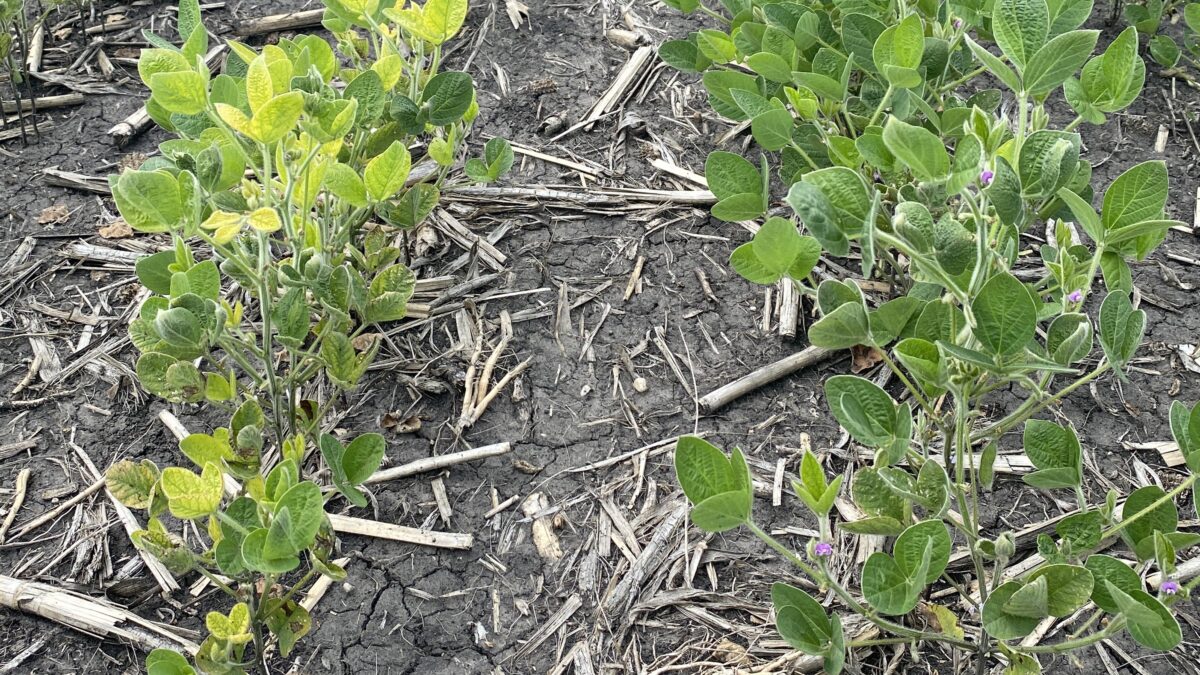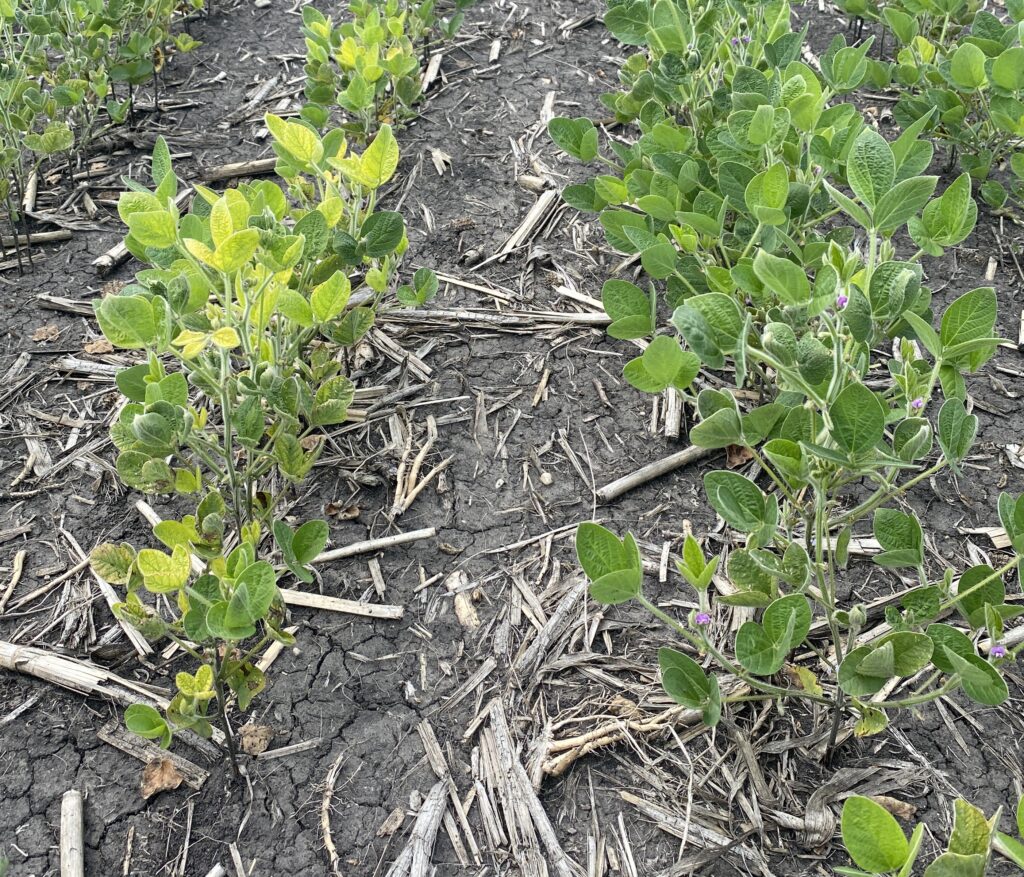Test, Test, Test: SCN Lessons Learned and Steps Forward

Sometimes I feel like a broken record talking about soybean cyst nematode (SCN), but if the 2024 season taught us anything, it’s that there’s still significant interest in information about SCN.
Test, Test, Test
One initiative we took in 2024 was spearheading SCN sampling across our footprint. We helped growers connect with free testing programs offered in North Dakota, South Dakota and Minnesota. Of the samples we submitted, most came back with low or undetectable levels. However, several showed moderate counts.
During our Peterson Field Insights Field Days, one grower approached us after finding egg counts exceeding 20,000 in his first year of testing! That’s an eye-opening number and a critical reminder not to ignore this issue. Consistent testing is key to identifying problems early.

SCN symptoms to this level (left) have already dropped yield by 50%. Managing a low population is much cheaper than reducing a high one.
Testing is easy and free, as all three states in our footprint offer no-cost programs. For the grower with the exceptionally high egg count, there are steps he or she can take to reduce SCN levels to a more manageable range. However, earlier detection would have made the process much less challenging.
Managing resistance to the PI 88788 and Peking SCN genes will be is essential. Our options for combating SCN are limited, so we must carefully manage the tools we have.
Remember when RoundUp Ready first hit the market? Over time, many weeds have evolved resistance, leaving us scrambling for alternatives. We’re working to avoid a similar situation with SCN.
Key Management Strategies
The best ways to prevent resistance are crop rotation, source rotation and using other tools.
Crop Rotation
While monocropping can sometimes pay off or be necessary, it’s still a risky practice. Growing the same crop year after year encourages disease, pests and other issues—including SCN. SCN eggs can persist for several years, but introducing a break between soybean crops helps lower egg counts and manage resistance. Crop rotation remains one of the simplest and most
effective tools in SCN management.
Source Resistance
Right now, our two in-plant sources of SCN protection are PI-88788 and Peking genes. Each source targets overlapping SCN races, along with some unique ones. Using only one gene source for extended periods allows the SCN races it doesn’t cover to grow unchecked.
Rotating between these resistant sources helps suppress more SCN races and protects against resistance building.
Other Tools
Additional tools like seed treatment and nematicides can significantly reduce SCN populations. Our Peterson Select Nematicide uses a product called BioST Nematicide which is a broad spectrum biological nematicide. BioST nematicide destroys nematodes, eggs and juveniles within 24-48 hours of contact and stays in the rootzone for up to 75 days. There are many other seed treatments like ILEVO (BASF) and Saltro (Syngenta) that are effective at suppressing nematode activity.
Yes, there is a cost to these products. But there’s also a cost to losing 40 bushels per acre to an invisible enemy. The key is strategic targeting. For fields with moderate to high SCN counts, investing in stronger products can help lower cyst levels.
On lower-risk fields, consider using more affordable options to complement genetic resistance. Think of it as a one-two punch: tackle problem areas aggressively while maintaining broader, cost-effective prevention elsewhere.











